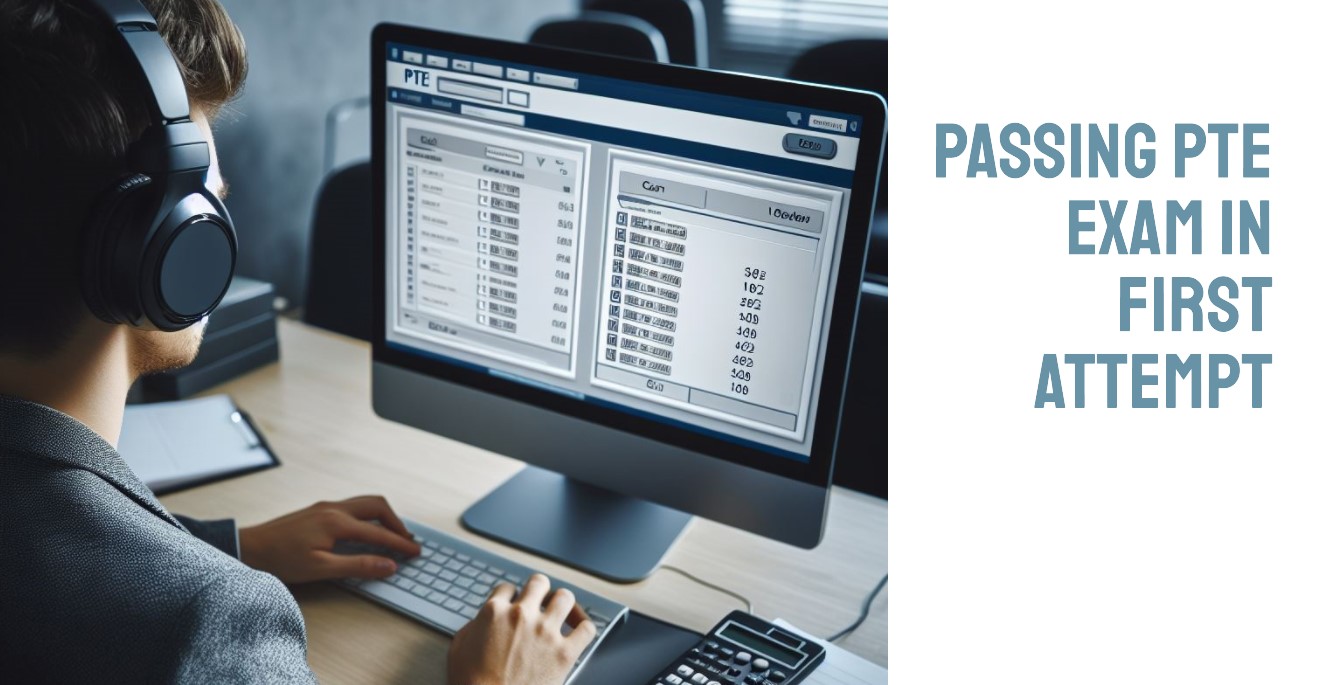To kickstart your quest for PTE mastery, it’s crucial to dive into the world of the computer-based test interface. Getting cozy with the ins and outs of the software layout isn’t just a fancy suggestion; it’s your secret weapon. Picture this: a simulated environment during your practice sessions that not only boosts your familiarity but also kicks those test-day jitters to the curb. It’s like having a backstage pass to success, giving you a clear edge in the PTE game. So, why wait? Let’s make the computer-based interface your playground for excellence!
Familiarizing Yourself with Test Software:
PTE exam is computer-based, and understanding the test software is crucial for a seamless experience. Start by acquainting yourself with the test interface during practice sessions. Simulate exam conditions by practicing with a timer and in a distraction-free environment. Familiarity with the software not only builds confidence but also helps you navigate the test efficiently on the actual exam day.
Speaking Section Strategies:
Speaking section of PTE exam assesses your ability to communicate effectively in English. Focus on clear pronunciation, maintaining a steady flow of speech, and capturing the intended meaning. Pay attention to the rise and fall of your voice to convey nuances accurately. Train your listening skills to repeat sentences precisely, preserving the original tone and rhythm. Develop a structured approach to describe visual information and practice responding promptly to short queries for a well-rounded speaking performance.
Writing Section Tips:
Writing section involves honing different skills for various tasks. Develop effective summarization skills for the “Summarize Written Text” task. Perfect the structure of an essay, including introduction, body paragraphs, and conclusion, for the essay writing task. Enhance your understanding of paragraph structure and coherence for the “Reorder Paragraphs” task. Strengthen your comprehension skills to identify main ideas and supporting details in different tasks, such as “Reorder Paragraphs” and “Multiple Choice, Choose Single Answer. Familiarize yourself with the specific language used in academic contexts, and consider joining a PTE institute in Sydney to receive targeted guidance and support tailored to the exam’s requirements.
Reading Section Techniques:
Active reading habits are key to success in the reading section. Quickly identify the main idea of a passage in “Multiple-Choice, Choose Single Answer.” Practice identifying all correct options based on the information in the text in “Multiple-Choice, Choose Multiple Answers.” Distinguish between relevant and irrelevant details in various tasks, and improve your vocabulary for “Fill in the Blanks (Reading & Writing).”
Listening Section Strategies:
The listening section requires skills in extracting key information and understanding spoken content. Develop effective summarization techniques for “Summarize Spoken Text.” Pay attention to tone, emphasis, and key points in spoken passages, practicing paraphrasing and summarizing.
Utilizing Feedback Effectively:
Feedback is a valuable tool for improvement. Seek input from teachers or language exchange partners and incorporate it into your practice routine. Regular feedback helps identify weaknesses and refines your strategies for better performance.
Cultural Awareness in Language Use:
Understanding cultural nuances in language expression is essential for the PTE exam. Adapt your language use to different contexts, ensuring that your responses align with culturally appropriate communication.
Customizing Study Plans for Individual Needs:
Assess your strengths and weaknesses to tailor study plans that address specific areas of improvement. A personalized approach to preparation can significantly enhance your overall performance.
Utilizing Social Media for Language Learning:
Join online communities for English learners to share experiences and gain insights. Follow English-speaking influencers for language exposure, helping you immerse yourself in authentic language use.
Effective Group Study Methods:
Form study groups for collaborative learning, sharing strategies and tips with peers. Collaborative efforts can provide diverse perspectives and enhance your understanding of various topics.
Conclusion:
Passing the PTE exam in the first attempt requires a holistic approach that encompasses all sections of the test. By following the strategies outlined in this guide, and with dedicated practice, you can approach the exam with confidence. Remember, success in the PTE exam is not just about language proficiency but also about strategic preparation and effective utilization of available resources.




